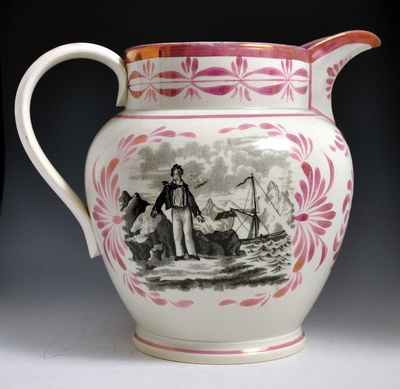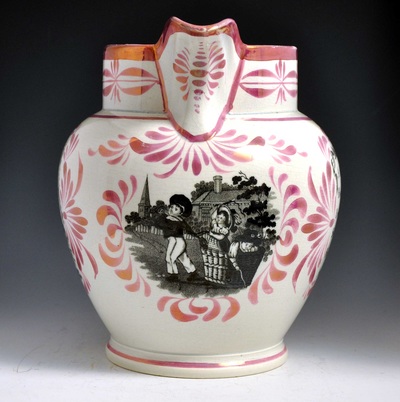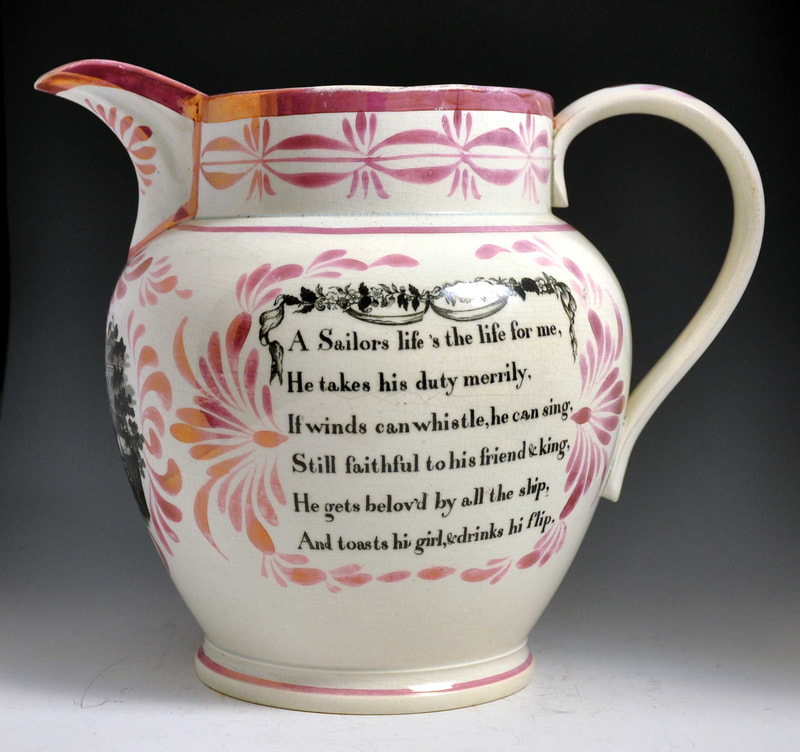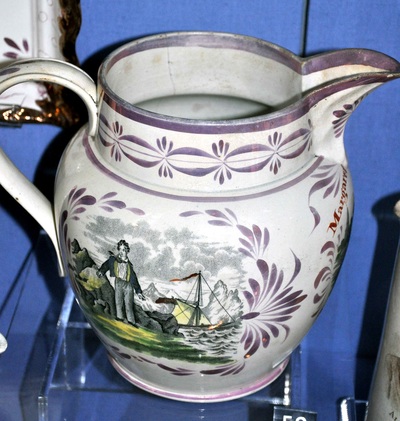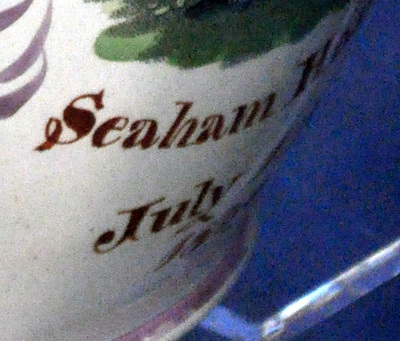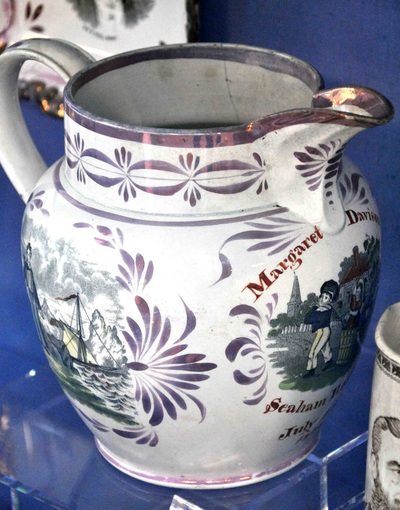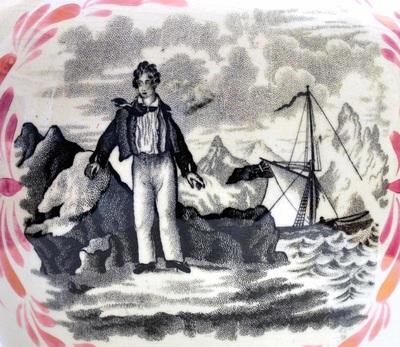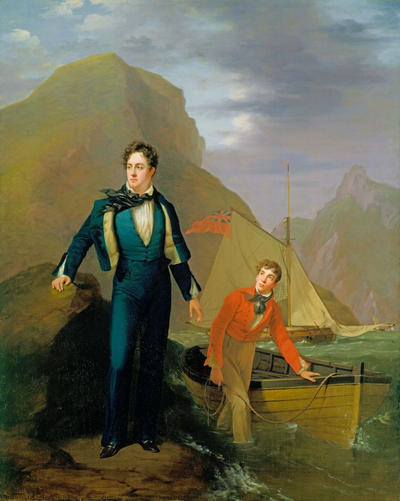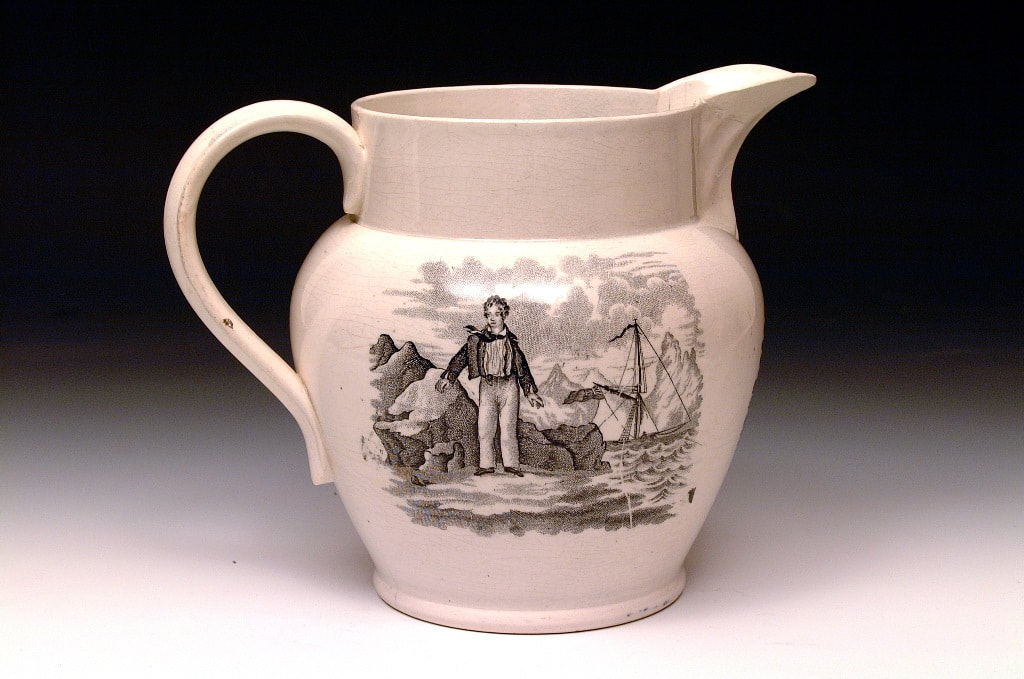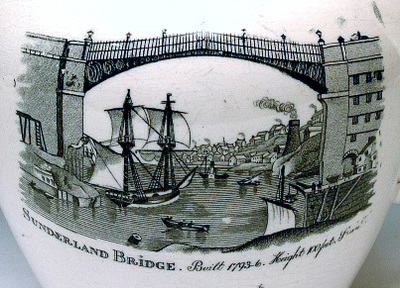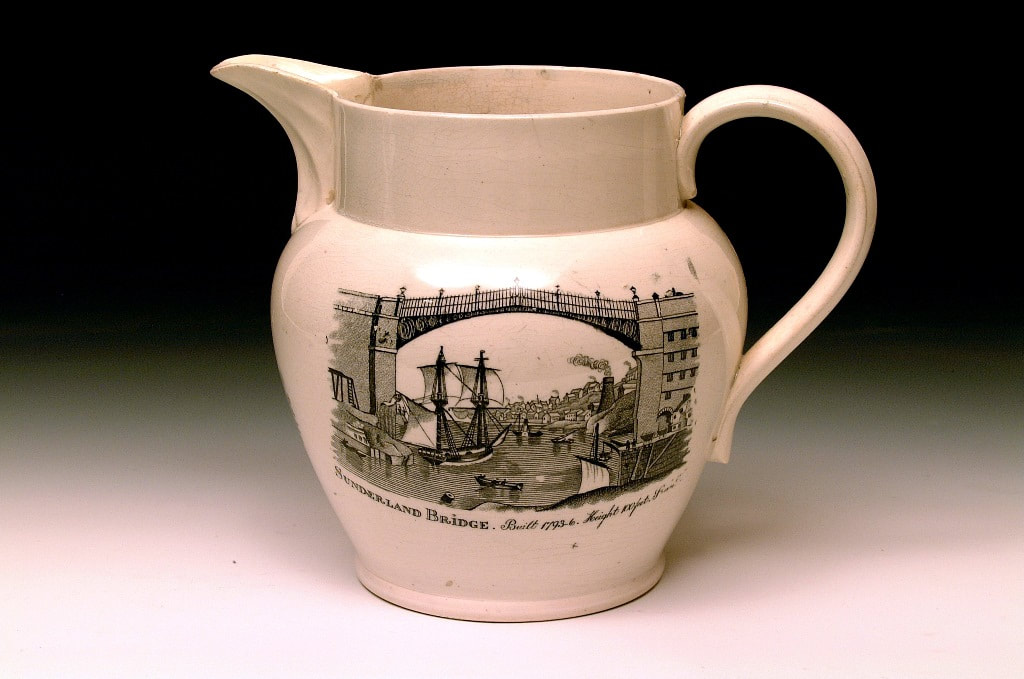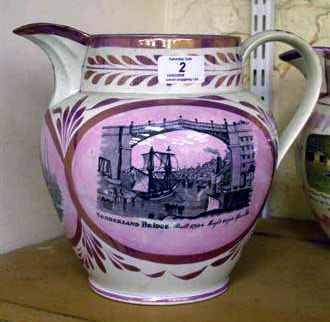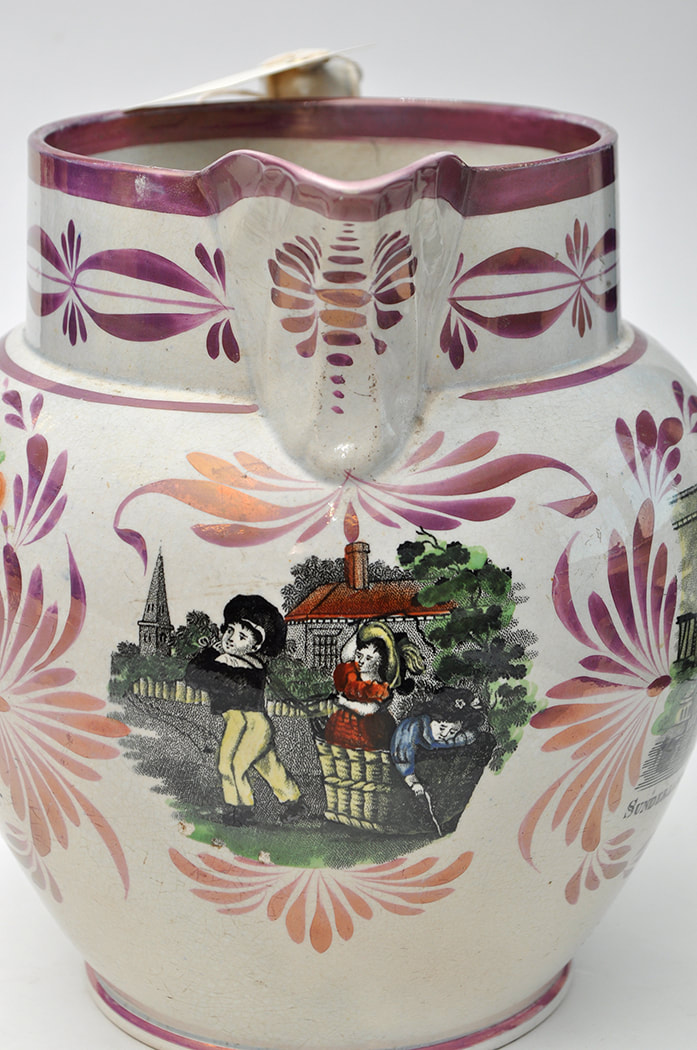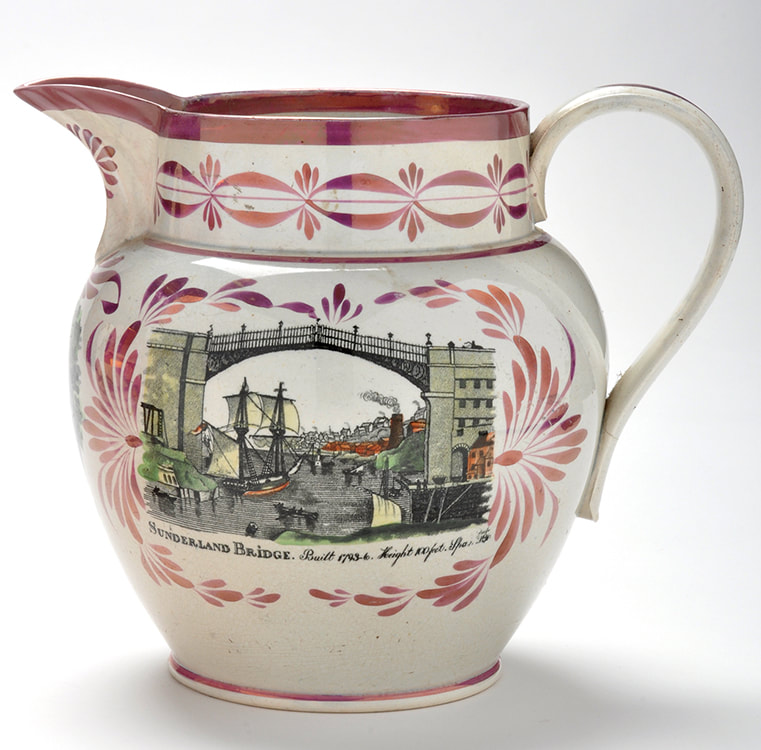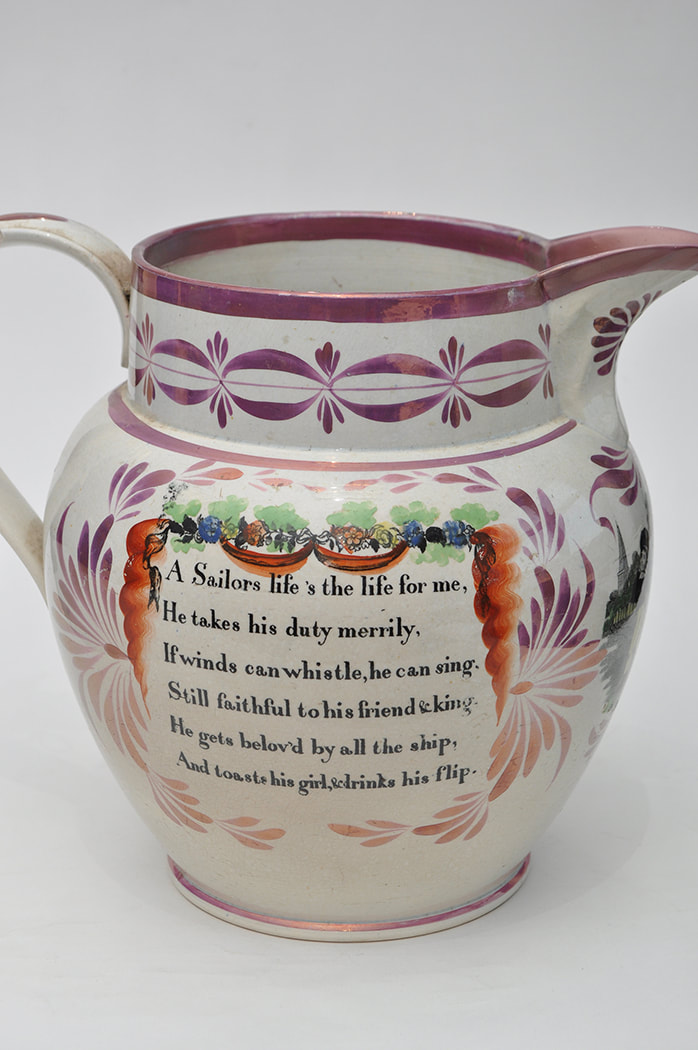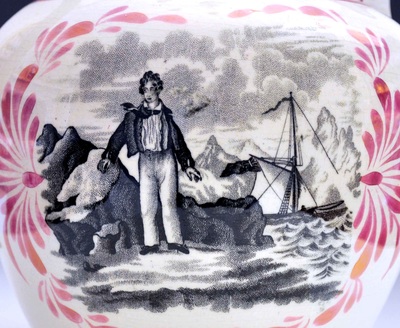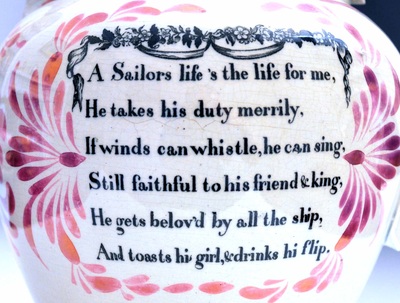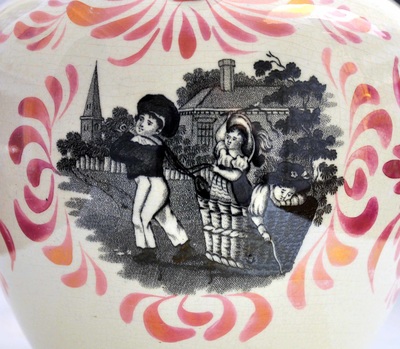|
The jug below is attributed to Seaham Pottery, and has very different decoration to the items I've written about so far. It is attributed to Seaham on the basis of a similar jug, in the Sunderland Museum displays, with the inscription 'Margaret Davison', 'Seaham Harbour' and the date 'July 1829'. That's not quite the end of the story though, because the Seaham Pottery wasn't built until 1836. So: either the jug was made at another pottery in 1829 before the Seaham Pottery was built; or the jug was made by Seaham Pottery at a later date for Margaret, perhaps as a birthday gift. The Byron transfer is after a painting of the poet, with his servant Robert Rushton, by George Sanders (1774–1846) in the Royal Collection. There's a copy of the painting at Newstead Abbey, Lord Byron's home. (As discussed before, Byron was married in Seaham in 1815, so has a local connection.) Please see Ian Holmes' site for two mugs with the transfer. The Byron transfer is also found on items with a distinctive view of the Sunderland Bridge. In Baker it is listed as view number 5, with a note about the paddle steamer in the background. The jug above is undecorated, and was likely sold as a factory second. Often these undecorated items have firing cracks or flaws. The items below are more typical with the elaborate lustre decoration associated with these Seaham-attributed jugs. If you have a similarly decorated item, please get in touch. If we could find another with a dated inscription, we might get a step closer to proving these items were made at Seaham Pottery after 1836. P.S. Norman Lowe has done some digging in the census records and made some interesting discoveries.
Taking all of that into account, it seems possible, perhaps even probable, that the jug was given to Margaret on her 21st birthday in 1850. William Davison is recorded as being a dock pilot born in Monkwearmouth in 1826. Aged 24 in 1850, he would have worked as a seaman, going out to meet incoming ships and navigating them into the harbour. So perhaps neither William nor Margaret had much interest in the poetry of Byron. For them, the untitled image would have been of young William standing on the shore. At this stage in their relationship, the other transfers on the jug, regarding the sailor's life, and young children playing, would also have had personal poignancy. All this considered, the Seaham attribution now seems more secure. The jug would have been made around the time the pottery changed hands. Walker sold the premises at an auction on December 11th, 1850. R.C. Wilson then ran the pottery from 1850 to 1852. So my money is on the jug being made at the end of Walker's ownership.
0 Comments
Leave a Reply. |
AuthorStephen Smith lives in London, and is always happy to hear from other collectors. If you have an interesting collection of plaques, and are based in the UK, he will photograph them for you. Free advice given regarding selling and dispersal of a collection, or to those wishing to start one. Just get in touch... Archives
February 2022
AcknowledgementsThis website is indebted to collectors, dealers and enthusiasts who have shared their knowledge or photos. In particular: Ian Holmes, Stephen Duckworth, Dick Henrywood, Norman Lowe, Keith Lovell, Donald H Ryan, Harold Crowder, Jack and Joyce Cockerill, Myrna Schkolne, Elinor Penna, Ian Sharp, Shauna Gregg at the Sunderland Museum, Keith Bell, Martyn Edgell, and Liz Denton.
|
